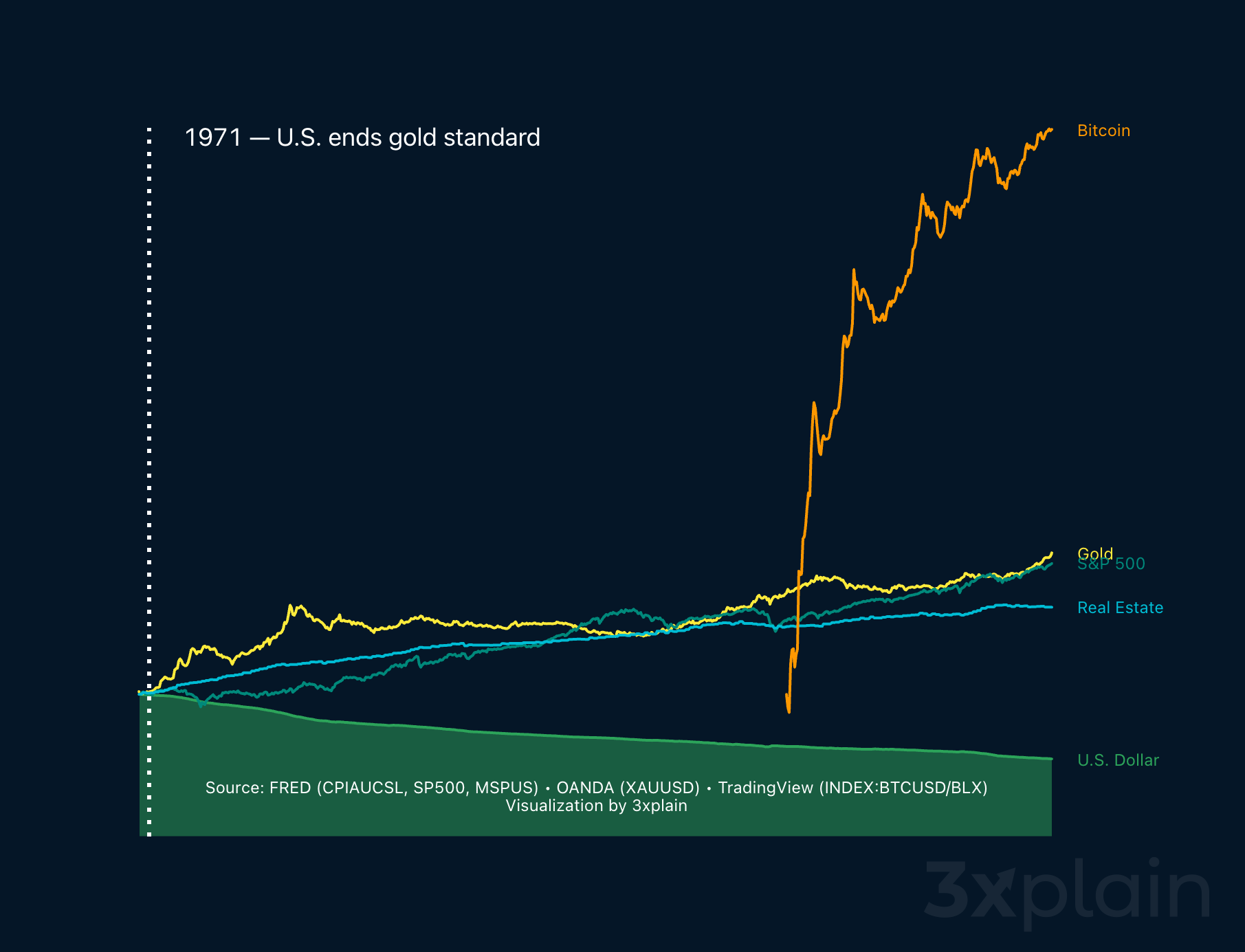ECONOMY
Your money is losing value, even when it doesn’t look like it.
Why your money buys less every year — and what you can do about it.
Inflation slowly reduces the purchasing power of your money. Even if your income stays the same, rising prices mean each dollar buys a little less every year. Understanding inflation isn’t just about economics — it’s about understanding the real value of what you earn and save.
You don’t need an economics degree, just a clear lens on how money really works.
The 3x Breakdown
Simplify
What is Inflation?
Inflation is the gradual rise in prices over time. It happens when demand grows faster than supply, when production costs increase, or when more money circulates in the economy. It’s not random — it’s built into how modern economies work.
Clarify
Why It Matters
As prices rise, the purchasing power of each dollar falls — meaning your money buys less over time. This steady erosion is why costs for groceries, rent, energy, and everyday essentials tend to climb year after year, even when nothing else seems to change.
Empower
How to Respond
You can’t stop inflation, but you can understand how it affects your financial life. Learning how different types of savings, income, and assets respond to rising prices helps you make more informed decisions — without relying on guesswork, trends, or headlines.
The Dollar’s Declining Value
Since the U.S. left the gold standard in 1971, the dollar has lost more than 85% of its purchasing power. That means each dollar buys far less than it once did — not because the money changed, but because prices rose steadily over time.
Source: TradingView Idea by 3xplain
View the live interactive chart
Inflation, Explained in 3x Words
Three simple ideas that explain how money’s value changes over time.
Inflation =
Hidden Tax
Rising prices silently reduce what your money can buy.
Money =
Stored Effort
You trade your work today for what your money can buy tomorrow.
Wealth =
Purchasing Power
Real wealth is measured by what your money can truly afford.





